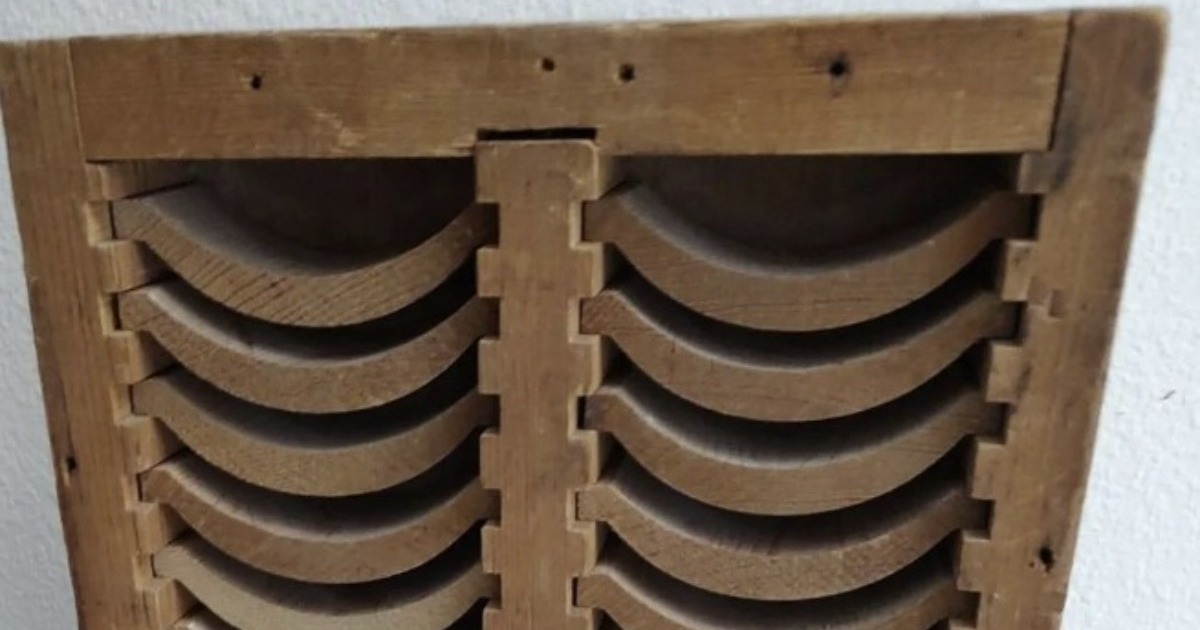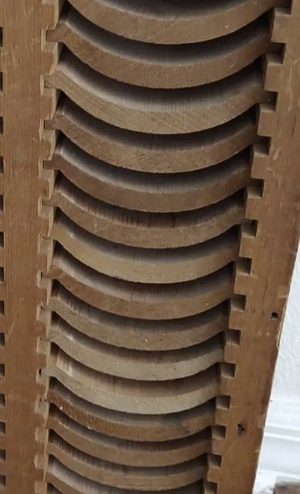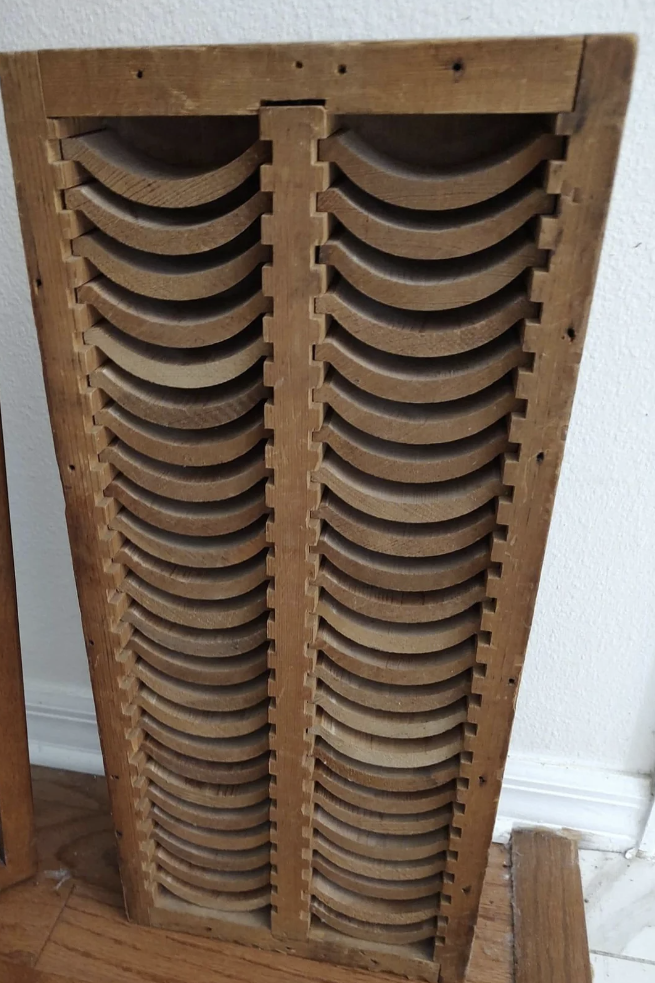
Remembering the Past Through Craftsmanship
While cleaning my grandfather’s old wooden cabinet, memories of the good old days flooded back. I could almost hear his proud voice demonstrating each step and explaining the fine details of his trade. Among the tools, I found a unique wooden stand with grooves and smooth sliding shelves. This stand, one of the last products made this way, showcased the craftsmanship and creativity of the past.
Craftsmanship Before the Industrial Age
Before the industrial age and machine manufacturing, craftsmen and women used basic tools to create masterpieces. This wooden drying rack with dovetail joints and concave shelves exemplified their work. Its primary function was to form and dry clay roof tiles before baking them in the kiln.

The Timeless Art of Clay Roof Tiles
Clay roof tile making is an age-old craft still used today. These tiles not only served practical purposes but also held decorative and symbolic meanings. The drying rack’s semi-circular shelves ensured the tiles dried evenly, preventing them from bending or becoming misshapen when placed on roofs. Each dried and fired tile not only protected houses but also added artistic value to the structure.
Artisans and Cultural Significance
Imagine a world where society thrived on artisans’ diligence and professionalism. Clay-tiled roofs displayed the constructors’ skill and achievements. In many areas, roof tile design and quality represented household status and legacy. These tiles’ long-lasting designs reflected the artisans’ hard work.
The wooden drying rack played a crucial role in tile manufacturing. Artisans fashioned wet clay and placed it on the slanted shelves to dry. The sliding shelves allowed easy movement of tiles without altering their shape. This time-consuming process demanded attention to detail, evident in the skilled craftsmen’s hands.

Preserving History Through Tools
Describing the wooden drying rack and its role in producing clay roof tiles evokes nostalgia for a time when household objects had stories. It reminds us to cherish our history and value the work embedded in simple tools.
This wooden stand, seemingly ordinary, represents creativity, cultural importance, and the enduring influence of craftsmen’s projects. Next time you see a colorful tiled roof, remember the effort and tools behind its creation. It’s a slice of history still providing shelter today.